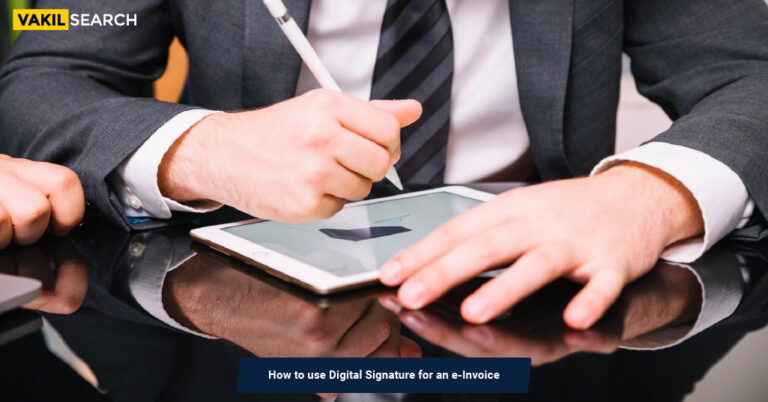This article unfolds the info regarding different types of digital signatures and which one to choose for security reasons. Read this blog to know more.
Introduction
There must have been a certain number of projects must have been put on hold until the necessary persons were gathered to sign off on them. Even though we are using digital signature technologies like Microsoft’s Digital Signature, they do not understand why these delays continue to occur, even though it is perfectly natural for the completion of a project to depend on the signatures of the responsible individuals for its completion. There are various types of digital signatures. Digital signatures, which are included in emails, copy both the sender and the recipient of the communication. Digital signatures provide significantly increased levels of protection in comparison to other forms. Know about the types of Digital Signatures and which one is secure among them,
What are Digital Signatures?
A digital signature is an electronic signature that can be used to authenticate the identity of a sender and the integrity of a message. Digital signatures are based on cryptography, which is a mathematical technique for securing data.
Features of a Digital Signature
Digital signatures have a number of features that make them secure and reliable:
- Authentication: Digital signatures can be used to authenticate the identity of a sender. This is because digital signatures are based on public key cryptography, which uses two keys: a public key and a private key. The public key is known to everyone, while the private key is only known to the owner of the key. When a sender signs a message with their private key, the receiver can use the sender’s public key to verify the signature.
- Integrity: Digital signatures can be used to ensure the integrity of a message. This is because digital signatures are based on a hash function, which is a mathematical function that converts a message of any length into a unique fingerprint, called a hash value. When a sender signs a message, they also include the hash value of the message in the signature. The receiver can then verify the integrity of the message by comparing the hash value in the signature to the hash value of the message they received.
- Non-repudiation: Digital signatures can be used to prevent repudiation. This is because a digital signature is a mathematical proof that the sender signed the message. If a sender later denies signing the message, the receiver can use the digital signature to prove that the sender did indeed sign the message.
Categories of Digital Signatures
There are three main categories of digital signatures:
- Simple digital signatures: Simple digital signatures are the least secure type of digital signature. They are created by attaching a hash value of the message to the message itself.
- Advanced digital signatures: Advanced digital signatures are more secure than simple digital signatures. They are created by encrypting the hash value of the message with the sender’s private key.
- Qualified digital signatures: Qualified digital signatures are the most secure type of digital signature. They are created by a trusted third party, called a certificate authority (CA). The CA verifies the identity of the sender before issuing a qualified digital signature.
How Do You Make A Digital Signature?
Signing software, such as an email program, provides a one-way hash of the electronic data to establish a digital signature.
As the name suggests, hashing is the process of creating a unique string of characters and integers. The hash is encrypted using the digital signature originator’s private key. Among other things, the digital signature includes the hash’s encrypted contents and its hashing technique.
Encrypting a hash rather than the complete message or document is preferable since a hash function may reduce the input to a smaller, fixed-length result. Because hashing is quicker than signing, this results in time savings.
To calculate a hash, you must know what kind of data you’re dealing with. Even the smallest alteration produces a new value to the data. The signer’s public key may be used to decode the hash and verify the data’s integrity.
What Exactly Are The Benefits Of Using Digital Signatures?
One of the questions asked on the internet the most often during the epidemic was, “How do you establish a digital signature?” The broad use of digital signatures has made it possible to expedite processes that previously required approval from a third party. As a result, digital signatures are now needed daily.
As its name suggests, a digital signature program makes it possible for a person to sign a digital document, attesting to the document’s legitimacy and indicating that they agree with its contents.
Instead of a traditional signature printed on paper, this process uses an online platform that provides security and confidentiality protections for the information being processed.
The many digital signature systems and software products on the market offer various features, security procedures, and authentication choices. For instance, a person can see a document that has been asked to be signed using the system’s password.
This particular kind of electronic signature is valid and utterly lawful since digital signature software offers an exceptionally high level of safety.
What Factors Contribute To The Reliability And Safety Of Digital Signatures?
When signing anything using a digital signature certificate, you can use a digital certificate to provide evidence of your identity. Digital signatures are believed to be a more secure electronic signature than other types because they are cryptographically linked to the document that has been signed and can be authenticated.
When a reliable third party is used to verify the digital signature, it becomes tough to alter the signature in any way. Consequently, it is an excellent piece of evidence that may be used to validate the authenticity of the signatures.
Types of Digital Signatures
Below given are the types of digital signatures:
Remote Digital Signature
A PDF or a word document may be viewed without needing additional software. It can verify ID, indicating it is a safe and versatile method. Security is ensured by double verification by email and OTP to the signer’s smartphone. Any business may trust this form of digital signature.
When a company uses a remote digital signature platform, the document is created and sent to the signatory using the same platform. After the copy has been sent to this person, they can assess it.
The program must complete a pre-signature check to authenticate the identity of the individual who will be signing the document before signing the signature. Following this verification process, the recipient marks it, at which point the document may be authenticated by the person who sent it.
Biometric Signature
The signer must be physically present to create biometric digital signatures while stamping their signature on a device such as a tablet. The document has been digitally stored, and it is possible to access it by sending a signed request through email.
Centralised Signature
As a rule, a company will only use this kind of signature for internal purposes. There is a computer that compiles all of the documents coming from the various departments and shows the names of the users whose things are pending signature.
Digital centralised signatures offer a safe means of possessing cryptographic keys inside HSM servers, and certified signatures may be produced by European trust service providers that have been pre-approved.
Be sure to check identification before entering this kind of establishment. Access to these data can only be gained by providing a one-of-a-kind password, which is how the site ensures its users’ safety.
PKI or PGP?
It is possible to confirm and authenticate the sender’s identity using PKI or PGP in conjunction with digital signatures, which also helps to reduce the security concerns connected with the transfer of public keys. The amount of protection offered to a digital signature’s private key is almost entirely responsible for determining the signature’s level of security.
Without the use of PGP or PKI, it is challenging to demonstrate someone’s identity or to revoke a key that has been compromised. This might provide malicious actors with the ability to impersonate someone without any method of verifying their identity.
By depending on a third party, digital signatures may be used to identify and authenticate individuals and verify the integrity of the communication.
As paperless and online transactions grow more widespread, you may find that using digital signatures helps protect and secure the data you save. You can keep your files, documents, and financial dealings better if you are familiar with digital signatures.
How to Create Digital Signatures Online?
Creating a digital signature online typically involves generating a digital representation of your handwritten signature that can be applied to electronic documents for authentication and verification purposes.
FAQs
What is a digital signature?
A digital signature is an electronic signature that can be used to authenticate the identity of the sender of a message or the signer of a document, and to ensure that the original content of the message or document that has been sent is unchanged. Digital signatures are based on cryptography and are very difficult to forge.
What is the difference between a digital signature and an electronic signature?
An electronic signature is any electronic representation of a signature, such as a typed name or a scanned image of a handwritten signature. A digital signature, on the other hand, is a more advanced type of electronic signature that uses cryptography to ensure the authenticity and integrity of the signed document.
How many types of digital signatures are there in India?
There are three types of digital signatures in India: Class 1 digital signature: This is the most basic type of digital signature and is suitable for low-risk transactions, such as signing emails or online forms. Class 2 digital signature: This type of digital signature is suitable for medium-risk transactions, such as filing taxes or signing contracts online. Class 3 digital signature: This is the most advanced type of digital signature and is suitable for high-risk transactions, such as signing financial documents or government forms.
What is the validity of a digital signature certificate?
The validity of a digital signature certificate is typically one to three years. After the certificate expires, it must be renewed in order to continue using a digital signature.
What is the difference between a digital signature certificate and a digital signature?
A digital signature certificate is a digital document that binds a public key to an individual's identity. It is issued by a trusted third party, known as a certificate authority. A digital signature is created using a private key and a digital signature certificate.
What is a type 3 digital signature?
A type 3 digital signature is a Class 3 digital signature that is stored on a physical token, such as a USB token or a smart card. This type of digital signature is the most secure type of digital signature and is required for certain types of high-risk transactions.
What is the famous digital signature?
There is no single famous digital signature. However, some of the most well-known digital signature providers include DocuSign, Adobe Sign, and Sign Now.
What are the two styles of signature?
The two main styles of signature are cursive and block. Cursive signatures are written in a flowing, connected style, while block signatures are written in a more disconnected, printed style.
How many DSC can a person hold?
A person can hold multiple DSCs, but only one DSC can be used for a particular purpose. For example, a person could have one DSC for signing personal documents and another DSC for signing business documents.
What is a Class 1 digital signature?
A Class 1 digital signature is the most basic type of digital signature and is suitable for low-risk transactions, such as signing emails or online forms. Class 1 digital signatures are typically created using a software application and do not require any special hardware.
What are the three levels of signature?
The three levels of signature in India are: Simple signature: This type of signature is not legally binding and is typically used for informal purposes, such as signing a receipt or a guest book. Electronic signature: An electronic signature is a digital representation of a signature and is legally binding in India. Digital signature: A digital signature is a more advanced type of electronic signature that uses cryptography to ensure the authenticity and integrity of the signed document.
What is type written signature?
A typewritten signature is a type of electronic signature that is created by typing one's name into a document. Typewritten signatures are not as secure as digital signatures, but they are still legally binding in India.
What does 2 dots mean in signature?
The two dots in a signature are typically used to represent the signer's initials. They can also be used to indicate that the signature is incomplete or that the signer is signing on behalf of someone else.
Conclusion
To enhance the workflow and the administration of processes in your company, it is feasible to utilise a variety of digital signatures. Their knowledge of more than 50 different technologies makes managing your documents, processes, and signatures far more straightforward. Vakilsearch can help with any other queries and information regarding legal matters.
Read more:










